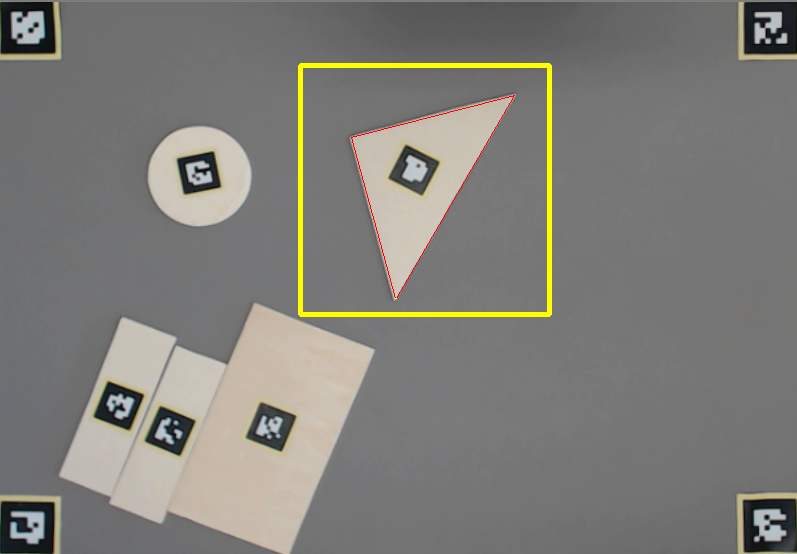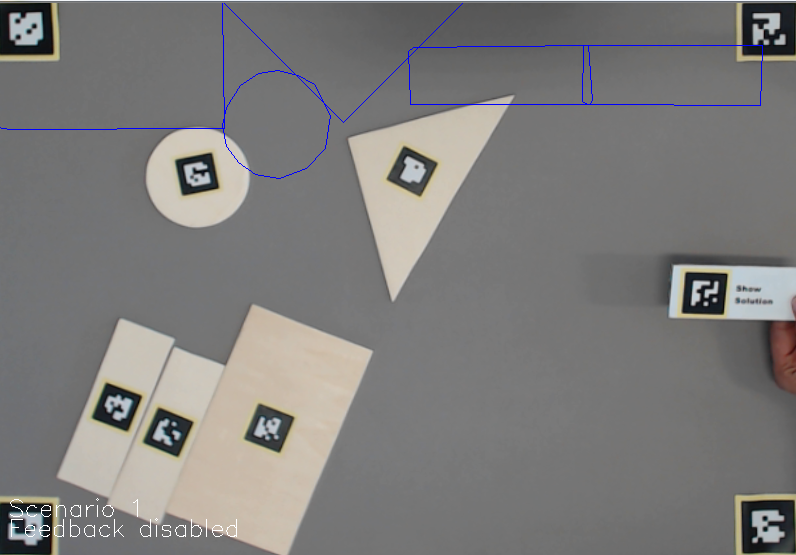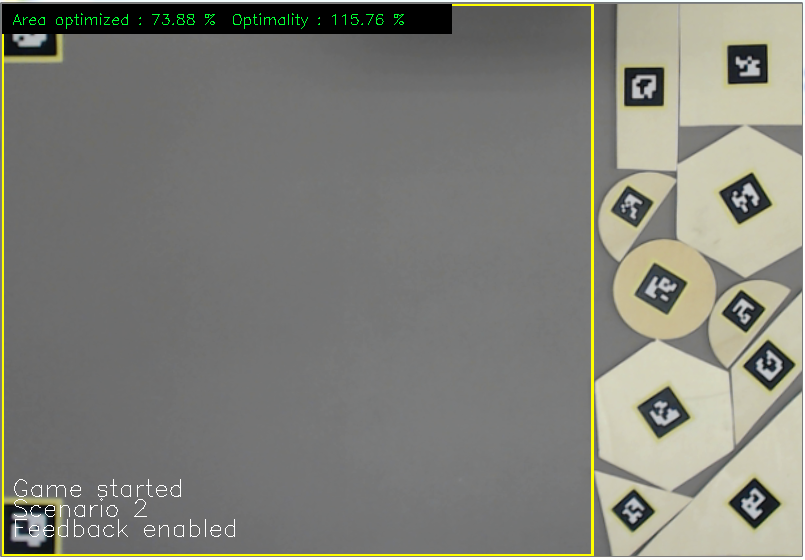As part of a collaboration with EPFL’s Chili Labs, I developed a tangible interface for training carpenters in optimizing wood cut planning. Optimal arrangement of woodcut layout when done manually, faces two challenges, one being that the apprentice carpenter does not get real time feedback on how efficient their arrangement is and the second being that most are not motivated enough to do such a task (perhaps because of the cognitive load). From a pedagogical view, such a problem can be tackled with the help of elements of gamification, like giving real time feedback on performance, leaderboards for identifying the best performers (in the classroom or workplace) and additional features that enables instructors or supervisors to add and customize scenarios of their choosing.
This problem of optimization of material use has been tackled by the textile, sheet metal cutting and carpentry cutting machine industries for many decades and is still an active area of research in the fields of computational geometry and operations research. In a way the goal of this project is to translate this kind of “computational” efficiency found in the automation industry into human workers which could prove useful in developing nations.
The problem of optimizing the arrangement of the component pieces needed to be made quantifiable (for the scoring to work) while reflecting real world usefulness as well. So it was recharacterized as a problem of finding the Maximum Empty (axis-parallel) Rectangle (MER) that can be fit into the empty space remaining in the workpiece after arranging the component pieces. Though in the real world, one would not get neat rectangular pieces as leftover from the cutting process, by considering the MER we can reasonably quantify the leftover material’s utility for future use.
Shape & Scenario Editors

Shape editor
The shape editor lets the instructor add contour information of the shape of each wood piece into the system, which is mapped to the chilitag placed on the piece. The contour data is stored into a YML file as (x,y) offsets from the position of the chilitag’s center. Image processing tasks here were implemented using OpenCV. The scenario module lets the instructor associate a group of shapes to a scenario using their associated AR tags. This helps in providing the scoring metrics and a simple hint system as shown below.

Bending a square shape
Game
Game : The objective of the game is to maximize the size of the Maximum Empty Rectangle (MER) that can be formed from the area left empty. Two interfaces were implemented for visualizing the MER, one in a virtual representation of the workpieces (using Unity3D) and the other by overlaying the MER on top of the live video stream itself. The CGAL library was used to find the MER.
